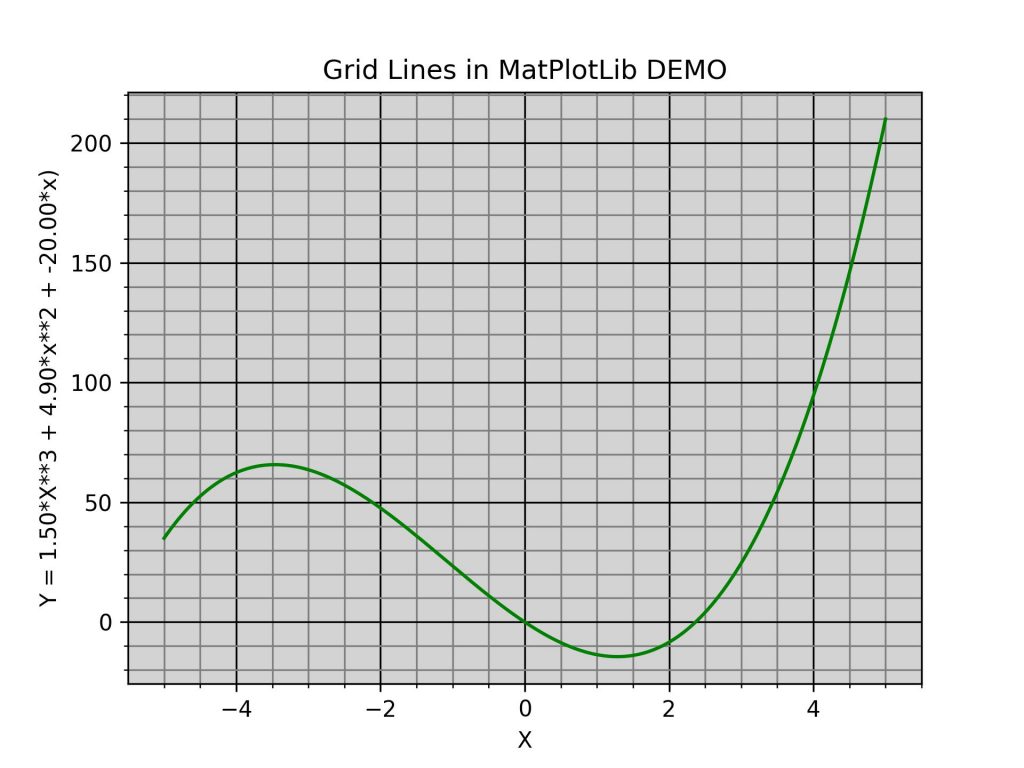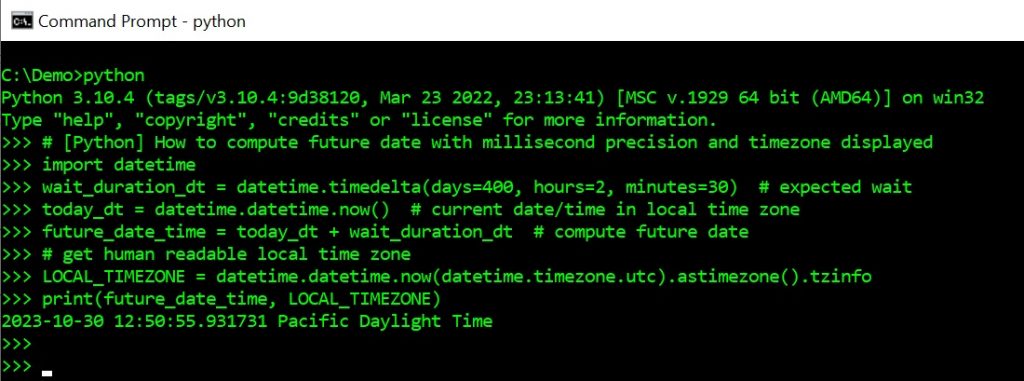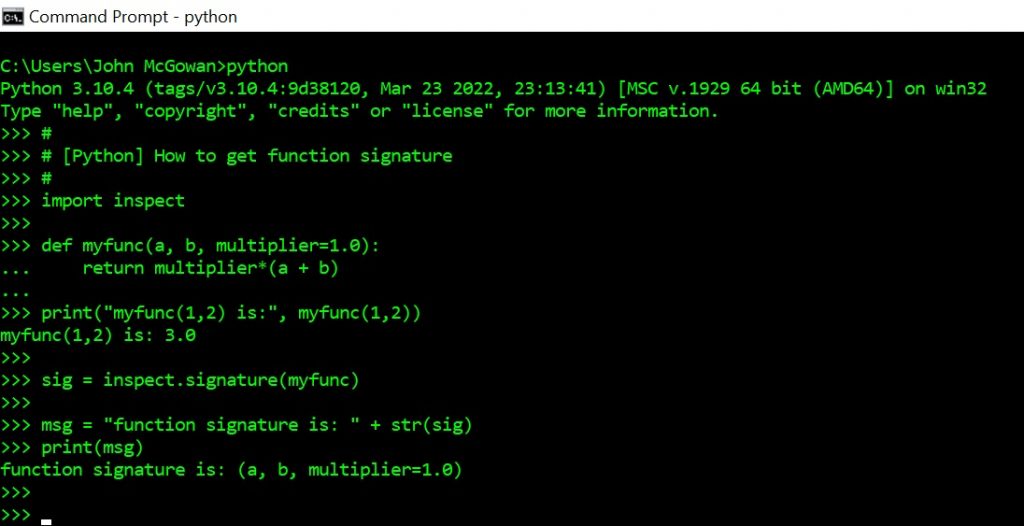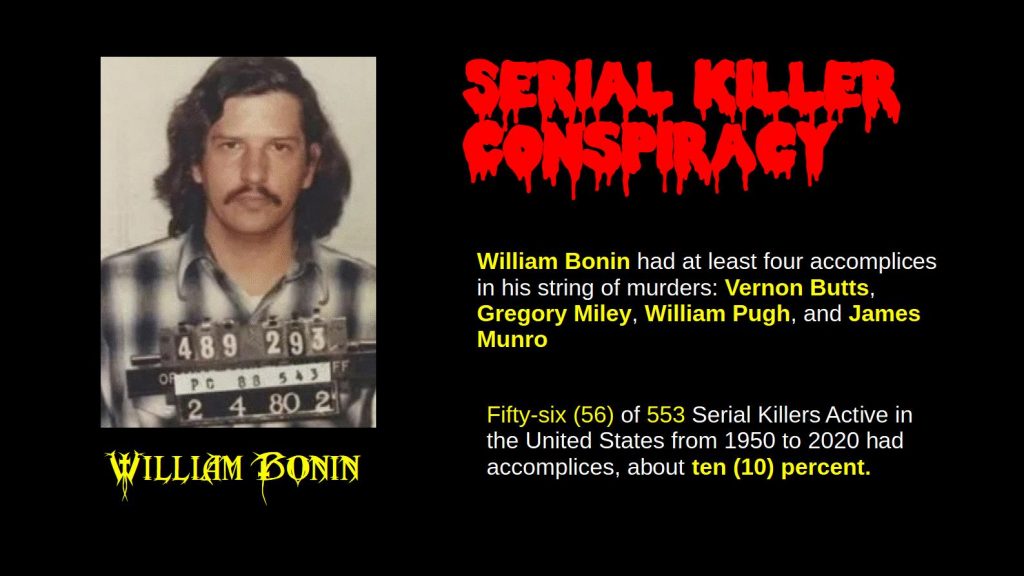
Serial Killer Conspiracies
Another brief followup to my article on the rationality of conspiracy theories. It is a common belief among intellectuals that “conspiracy theories” are inherently irrational or so unlikely as to be essentially inherently irrational.
The dictionary — as opposed to popular pejorative propaganda meaning — of “conspiracy theory” is simply a theory or hypothesis that some illegal or harmful event was caused by two or more malefactors working together. When surviving family, friends and neighbors, police investigators, news reporters or others suspect two or more perpetrators in a murder, they must consider a conspiracy theory.
The popular propaganda redefinition of “conspiracy theory,” the most straightforward dictionary phrase for a conspiracy theory, as “an irrational theory contradicted by evidence and reason” makes it difficult even to discuss and consider actual conspiracies in the modern world — not unlike the fictional newspeak in George Orwell’s dystopian novel 1984.
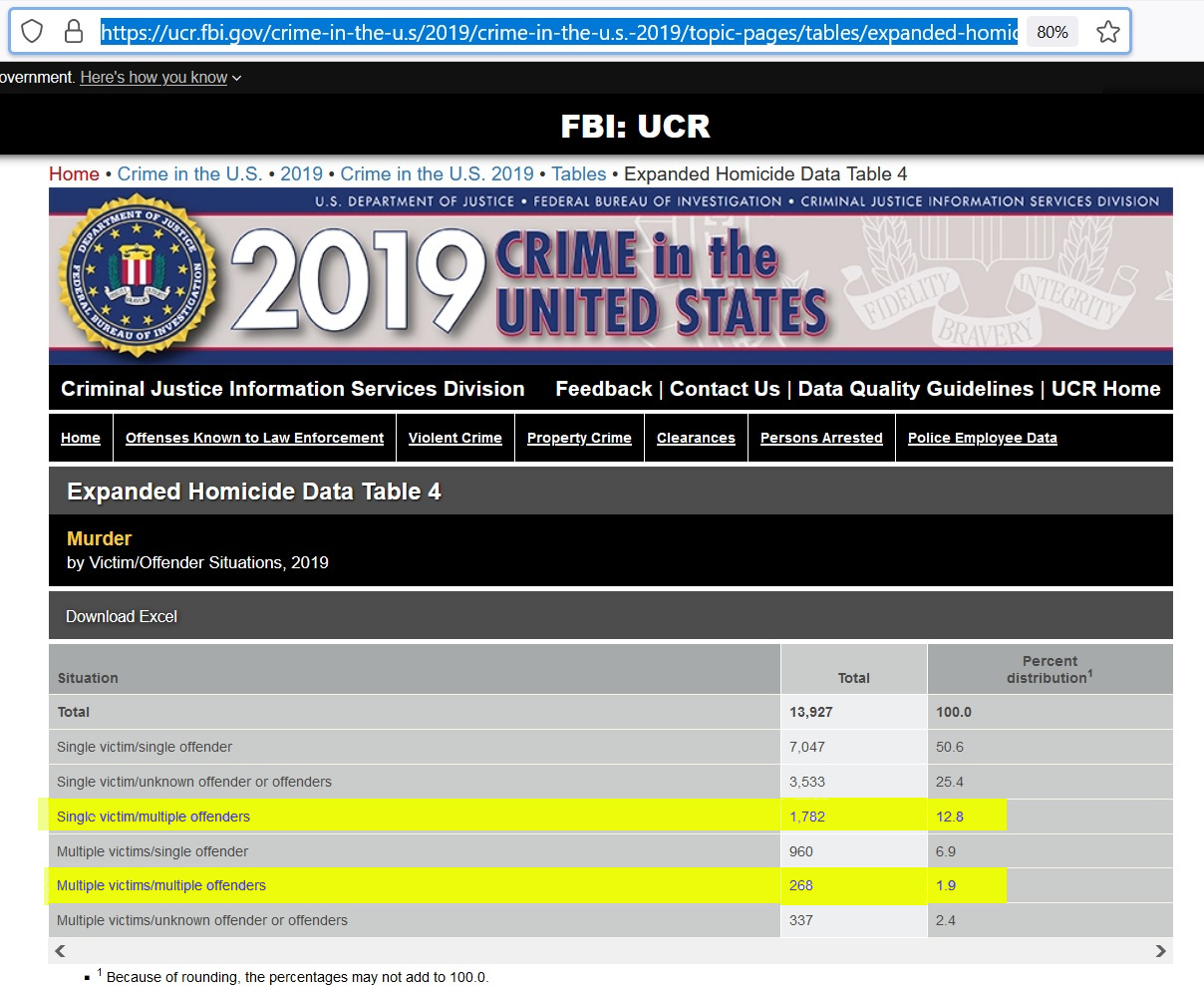
A high fraction of events where the phrase “conspiracy theory” is used to stigmatize suspicions of a criminal conspiracy are murders such as the assassination of President Kennedy or possible murders such as the suspicious “suicide” of financier Jeffrey Epstein where the suspected criminal conspiracy involves powerful persons such as high government officials, politicians, business leaders, or others. According to official FBI statistics about 14.7 percent of murders in 2019 were committed by multiple offenders, a conspiracy in common usage.
Almost twenty-seven percent (27%) of murders in 2019 were unsolved. Unsolved murders tend to be gang violence/organized crime murders, that is conspiracies that could not be proven. The larger, the more powerful, and the more secret a gang or organized crime group is perceived to be, the less willing witnesses are to come forward with testimony and evidence.
Official government numbers may be inaccurate due to political pressure, bias, or error. For example, serious questions have been raised about the FBI’s estimates of the number of serial killers and serial homicides in the early 1980s.
As a partial check on the FBI’s official numbers on murders with multiple offenders, I previously analyzed the frequency of conspiracies in high profile “serial killer” murder cases listed in Jack Rosewood’s Big Book of Serial Killers which lists one-hundred and fifty cases from around the world, mostly the United States. This analysis indicated about 5-10% of cases were serial killer conspiracies. Here I present a more extensive analysis of Wikipedia’s list of serial killers in the United States page, which has 553 serial killers reportedly active in the United States from 1950 to 2020 (I omitted the pre-1950 cases listed on the Wikipedia page).
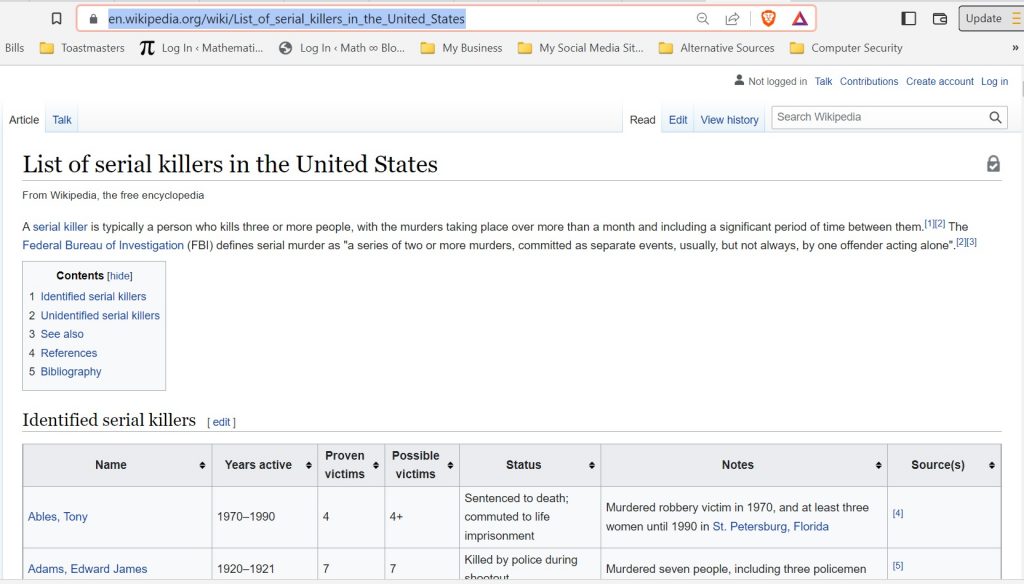
Methods
The data was extracted from the Wikipedia page identified serial killers table to a CSV (comma separated values) file on August 18, 2022 for another analysis to understand the properties and possible causes of serial murders, notably the seeming 1970s-1980s serial killer wave. The analysis is done using the Python programming language, NumPy, SciPy, and Matplotlib.
The table includes a Notes column which enables identification of cases where there was one or more accomplice. The language “accomplice,” “accomplices,” “with partner”, “with husband,” “with wife,” and similar phrases is generally used to identify accomplices. Some accomplices are listed separately in the Name column of the table; some are not. Serial killers reportedly active in the United States from 1950 to 2020 were analyzed.
The accomplices refer to persons convicted in a court of law. They do not include unsubstantiated claims by the serial killer, suspects never convicted including named or unnamed suspects suggested in books such as Maury Terry’s The Ultimate Evil or Dave McGowan (no relation)’s Programmed to Kill. As discussed in my previous article, there is evidence of additional accomplices, never convicted, in a number of cases listed by Wikipedia with no accomplices in the Notes section. These include John Wayne Gacy, Patrick Kearney, Randy Kraft, and several others. These “maybe” serial killer conspiracies are not included in the results below which count only convicted accomplices.
The Wikipedia list of serial killers in the United States is extensive, appears correct, but there may be some errors.
The plot below gives a rough overview of the serial killer conspiracy cases — fifty-six (56) named serial killers out of 553 reportedly active from 1950 to 2020. This is 10.13% of the names listed in the table. The error is roughly 1.4% giving a ninety-five percent confidence interval of about 7.9% to 13.2% of identified serial killer cases involve conspiracies — have accomplices. Both the number of proven victims and the number of serial killers active peaks during the 1970s and 1980s, declining substantially in the 1990s up to 2020.
The green bars show the dates the serial killer and accomplices were active. The red circle shows the middle of this date range. The horizontal axis is the date in year. The vertical axis is the number of proven victims from the table. The red circles are labeled with the names of all identified serial killers from the table with the same middle of the date range. This shows some of the accomplices/conspirators. The data in the table, especially the notes column, is inconsistently presented, resulting in some serial killers not being grouped together. For example, Elmer Wayne Henley and Dean Corll, both shown in the plot, were accomplices. The table appears to credit Henley with only six (6) of the proven twenty-eight (28) murders organized by Corll, the ringleader.
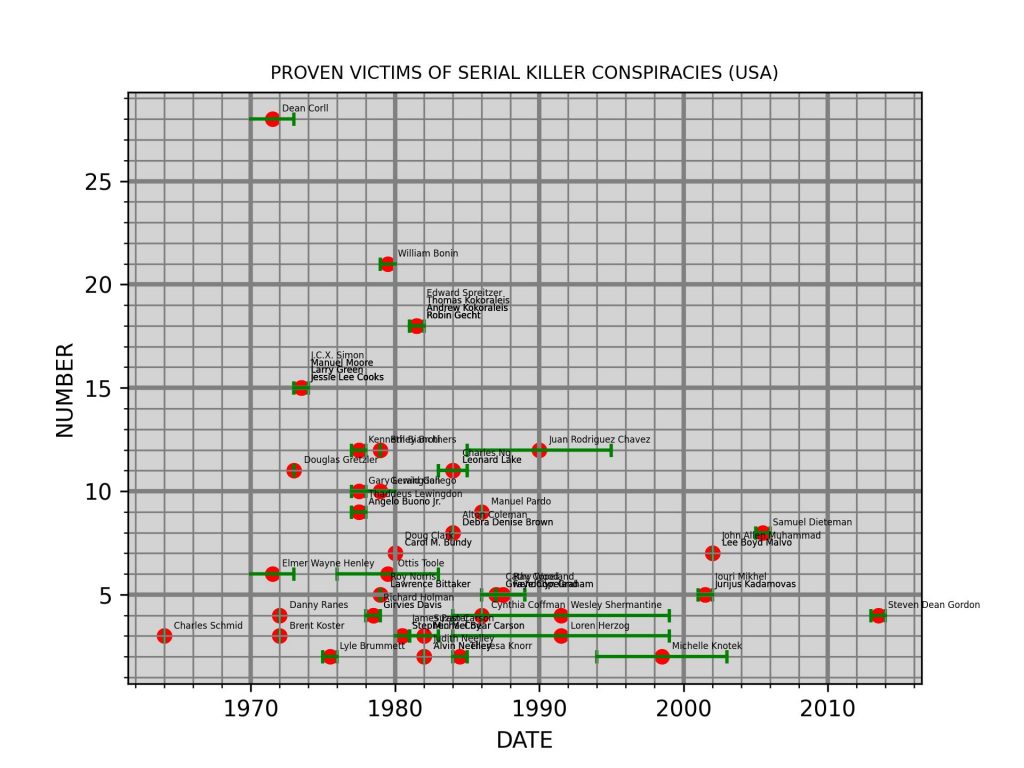
Conclusion
Thus, proven in a court of law conspiracies are a small but significant fraction, about 10 percent (8-13% ninety-five percent confidence interval), of prominent serial killer cases — smaller than the 14.7 percent of murders with multiple offenders according to the FBI (in 2019). This is not surprising given the generally solitary nature of the crimes. Nonetheless, conspiracies are not exceptionally rare or unusual even in this type of murder.
Appendix: Deep Dive into Analysis
ACCOMPLICE CASES (56) CASE NOTES MATCH AT LEAST ONE OF: accomplice, with wife, with husband, cult , accompliace, with his wife, with her husband, killers, partnership, with the aid of local teenagers Bianchi, Kenneth Along with accomplice Angelo Buono Jr., known as "The Hillside Stranglers". Murdered young women in Los Angeles and Washington Bittaker, Lawrence With accomplice Roy Norris known as "The Tool Box Killers" Bonin, William Known as "The Freeway Killer"; preyed on young men and boys in southern California with several accomplices Briley Brothers Three brothers and an accomplice responsible for 11 murders Brown, Debra Denise Accomplice of Alton Coleman Brummett, Lyle Raped and strangled three women in Texas with an accomplice Bundy, Carol M. With accomplice Doug Clark, known as "The Sunset Strip Killers"; preyed on young women in West Hollywood and Los Angeles, California Buono Jr., Angelo Along with accomplice Kenneth Bianchi, known as "The Hillside Stranglers". Murdered young women in Los Angeles Carson, Michael Bear Along with his wife, Suzan Carson, dubbed "The San Francisco Witch Killers"; considered suspects in nearly a dozen other deaths in the U.S. and Europe[103] Carson, Suzan Along with her husband, Michael Bear Carson, dubbed "The San Francisco Witch Killers"; considered suspects in nearly a dozen other deaths in the U.S. and Europe[103] Chavez, Juan Rodriguez Known as "The Thrill Killer"; killed a neighbor during a burglary; paroled and went on a killing spree with a teenage accomplice Clark, Doug With accomplice Carol M. Bundy, known as "The Sunset Strip Killers"; preyed on young women in West Hollywood and Los Angeles, California Coffman, Cynthia Kidnapped four women by ATMs before accomplice strangled them Coleman, Alton Multi-state killer who, along with his accomplice, murdered a man and injured another, murdered four women and three young girls, and raped a young girl Cooks, Jessie Lee Part of "The Death Angels" cult responsible for the Zebra murders Copeland, Faye Along with her husband, Ray Copeland, the oldest couple ever sentenced to death in the United States Copeland, Ray Along with his wife, Faye Copeland, the oldest couple ever sentenced to death in the United States Corll, Dean Known as "The Candy Man" and "The Pied Piper". Crimes referred to as "The Houston Mass Murders"; raped and murdered boys and young men in Texas with the aid of teenaged accomplices David Owen Brooks and Elmer Wayne Henley Davis, Girvies Accomplice of Richard Holman; killed robbery witnesses, saying it was "easier" than wearing a mask Dieteman, Samuel Accomplice Dale Hausner Committed suicide in prison Gallego, Gerald Accomplice Charlene Gallego released in 1997 Gecht, Robin Member of the satanic cult and organized crime group known as "The Ripper Crew" or "The Chicago Rippers" Gordon, Steven Dean Sex offender who raped and strangled prostitutes in Santa Ana and Anaheim, California, aided by accomplice Franc Cano Graham, Gwendolyn Accomplice of Cathy Wood; nurse's aide that preyed on elderly women in a Walker, Michigan nursing home Green, Larry Part of "The Death Angels" cult responsible for the Zebra murders Gretzler, Douglas With accomplice Willie Steelman, killed witnesses to their robberies spree across California and Arizona Henley, Elmer Wayne Crimes referred to as "The Houston Mass Murders"; accomplice of Dean Corll, who he later killed in self-defense Herzog, Loren Along with accompliace Wesley Shermantine known as "The Speed Freak Killers" Holman, Richard Accomplice of Girvies Davis; killed robbery witnesses Kadamovas, Jurijus Accomplice of Iouri Mikhel; Lithuanian immigrant who kidnapped five people for ransom money in California and killed them Knorr, Theresa Her sons, William and Robert Jr., were accomplices Knotek, Michelle Tortured and abused boarders in her home with her husband Kokoraleis, Andrew Member of the satanic cult and organized crime group known as "The Ripper Crew" or "The Chicago Rippers" Kokoraleis, Thomas Member of the satanic cult and organized crime group known as "The Ripper Crew" or "The Chicago Rippers" Koster, Brent Teenage accomplice of Danny Ranes, who actively participated in three of his four murders Lake, Leonard Along with accomplice Charles Ng, they are also known as "The Operation Miranda Killers" Lewingdon, Gary Together with brother Thaddeus Lewingdon, known as "The .22 Caliber Killers" Lewingdon, Thaddeus Together with brother Gary Lewingdon, known as "The .22 Caliber Killers" Malvo, Lee Boyd With accomplice John Allen Muhammad, perpetrated the D.C. sniper attacks McCoy, Stephen Along with his accomplice, James Paster, the pair murdered three people in the Houston Area Mikhel, Iouri Accomplice of Jurijus Kadamovas; Russian immigrant who kidnapped five people in California for ransom money and killed them Moore, Manuel Part of "The Death Angels" cult responsible for the Zebra murders Muhammad, John Allen With accomplice Lee Boyd Malvo, perpetrated the D.C. sniper attacks Neelley, Alvin Committed murders with wife Judith Neelley Neelley, Judith Committed murders with husband Alvin Neelley Ng, Charles Along with accomplice Leonard Lake, they are also known as "The Operation Miranda Killers" Norris, Roy With accomplice Lawrence Bittaker known as "Tool Box Killers" Pardo, Manuel South Florida former police officer who acted in partnership with Rolando Garcia; the two claimed to be ridding the world of drug dealers Paster, James Along with his accomplice, Stephen McCoy, the pair murdered three people in the Houston Area. Paster confessed to two other murders for which he was never tried. Ranes, Danny Kidnapped, raped and murdered women around Kalamazoo, Michigan with teenage accomplice Brent Koster Schmid, Charles Known as "The Pied Piper of Tucson"; murdered three teenage girls in Arizona with the aid of local teenagers Shermantine, Wesley Along with accompliace Loren Herzog, known as "The Speed Freak Killers" Simon, J.C.X. Part of "The Death Angels" cult responsible for the Zebra murders Spreitzer, Edward Member of the satanic cult and organized crime group known as "The Ripper Crew" or "The Chicago Rippers" Toole, Ottis Accomplice of Henry Lee Lucas; claimed to have murdered Adam Walsh Wood, Cathy Accomplice of Gwendolyn Graham; nurse's aide that preyed on elderly women in a Walker, Michigan nursing home. Released on January 16, 2020 ACCOMPLICE CASES (56)
References
The Big Book of Serial Killers, Vol 1, by Jack Rosewood
https://www.amazon.com/Big-Book-Serial-Killers-Encyclopedia-ebook/dp/B071K51FQ4/ref=tmm_kin_swatch_0?_encoding=UTF8&qid=&sr=
FBI Expanded Homicide Data Table 4: Murder by Victim/Offender Situations, 2019
https://ucr.fbi.gov/crime-in-the-u.s/2019/crime-in-the-u.s.-2019/topic-pages/tables/expanded-homicide-data-table-4.xls
Using Murder: The Social Construction of Serial Homicide, by Philip Jenkins, Aldine De Gruyter, New York, 1994
“Serial Killer” Conspiracy Cases
Note that the details of these crimes are quite unpleasant and are discussed in these references. The analysis in this article is only concerned with the proportion of cases that were conspiracies as defined in common usage — multiple offenders working together.
Paul Bernardo and Karla Homolka
https://www.thecanadianencyclopedia.ca/en/article/paul-bernardo-and-karla-homolka-case
Kenneth Bianchi and Angelo Buono
https://allthatsinteresting.com/hillside-strangler-kenneth-bianchi-angelo-buono
Lawrence Sigmund Bittaker and Roy Lewis Norris
https://unhbcoe.org/en/Lawrence_Bittaker_and_Roy_Norris-0426802400
William Bonin (and 22-year-old Vernon Butts, as well as teenagers Gregory Miley, William Pugh, and James Munro)
https://www.upi.com/Archives/1982/01/07/Freeway-Killer-William-Bonin-convicted-of-luring-10-youths/3460977293230/
Douglas Clark and Carol Bundy
https://www.oxygen.com/mysteries-scandals/crime-time/carol-bundy-victim-mastermind-sunset-strip-killers
Dean Corll (with Elmer Wayne Henley and David Owen Brooks)
https://murderpedia.org/male.C/c/corll-dean.htm
Delfina and Maria de Jesus Gonzalez
https://justcriminals.info/2016/12/19/delfina-maria-de-jesus-gonzalez/
Patrick Kearney (and David Hill?)
https://criminalminds.fandom.com/wiki/Patrick_Kearney
Randy Steven Kraft and unknown accomplice or accomplices
https://murderpedia.org/male.K/k/kraft-randy.htm
Leonard Lake and Charles Ng
https://www.historicmysteries.com/charles-ng-and-leonard-lake/
John Allan Mohammad and Lee Boyd Malvo
https://stmuscholars.org/john-allen-muhammad-lee-boyd-malvo-the-dc-snipers/
David Ray Parker (and Cindy Hendy and others)
https://allthatsinteresting.com/david-parker-ray-toy-box-killer
https://www.fbi.gov/contact-us/field-offices/albuquerque/items-david-parker-ray
https://www.thescarechamber.com/david-parker-ray-toy-box-of-torture/
Fred West and Rosemary West
https://www.cnn.com/2021/06/04/europe/fred-rosemary-west-murders-gbr-cmd-intl/index.html
Aileen Carol Wuornos (and Tyria Moore, never charged)
https://sites.psu.edu/harringpassion/2019/03/29/aileen-wuornos/
John Wayne Gacy and possible unknown accomplice or accomplices
https://theweek.com/articles/478154/did-serial-killer-john-wayne-gacy-have-accomplices
https://newsfeed.time.com/2012/02/13/serial-killer-john-wayne-gacy-may-have-had-accomplices/
https://chicago.cbslocal.com/2012/02/10/attorneys-believe-gacy-had-accomplices/
https://www.oxygen.com/true-crime-buzz/how-john-wayne-gacy-survivor-jeffrey-rignall-went-on-a-personal-mission
https://www.archiweekend.com/viral-news/how-john-wayne-gacy-survivor-jeffrey-rignall-continued-an-individual-pursuit-to-stop-him-from-hurting-others/
Questions about Jeffrey Epstein “Suicide”
Programmed to Kill: The Politics of Serial Murder, Dave McGowan, August 2004
https://www.amazon.com/Programmed-Kill-Politics-Serial-Murder/dp/0595326404/
The Ultimate Evil: The Search for the Sons of Sam, by Maury Terry, Introduction by Joshua Zeman
https://www.amazon.com/Ultimate-Evil-Search-Sons-Sam-ebook/dp/B08NFVHPP5/
(C) 2022 by John F. McGowan, Ph.D.
About Me
John F. McGowan, Ph.D. solves problems using mathematics and mathematical software, including developing gesture recognition for touch devices, video compression and speech recognition technologies. He has extensive experience developing software in C, C++, MATLAB, Python, Visual Basic and many other programming languages. He has been a Visiting Scholar at HP Labs developing computer vision algorithms and software for mobile devices. He has worked as a contractor at NASA Ames Research Center involved in the research and development of image and video processing algorithms and technology. He has published articles on the origin and evolution of life, the exploration of Mars (anticipating the discovery of methane on Mars), and cheap access to space. He has a Ph.D. in physics from the University of Illinois at Urbana-Champaign and a B.S. in physics



